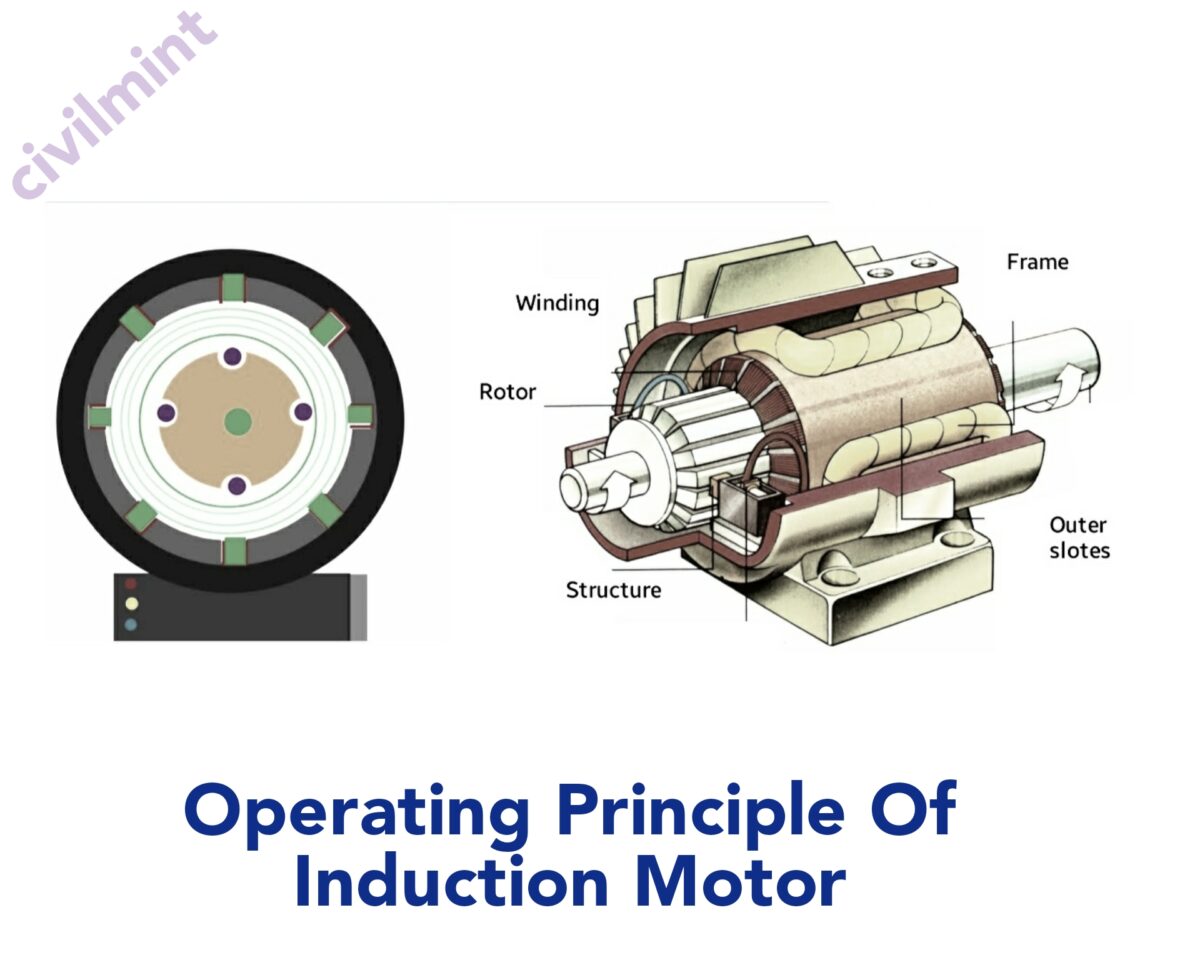Table of Contents
Introduction
In this post, I will discuss about Operating Principle of Induction Motor. Three-phase induction motors are extensively employed in the industrial sector. They typically maintain a constant speed from no load to full load. These machines offer several advantages, including simplicity in construction, affordability, and ease of maintenance.
Construction Of Induction Motor
An induction motor has two main parts: the stator and the rotor. The stator is the part that doesn’t move. It has three sets of wires called windings, which connect to a three-phase power supply and create a spinning magnetic field.
The rotor is the part that spins inside the motor. There are two types:
- The “squirrel-cage” rotor has iron bars that are looped together at the ends.
- The “wound” rotor has its own set of wires, and sometimes, these wires connect to resistors for control.
Think of an induction motor like a transformer with a spinning part or like a machine that changes electricity into movement. This happens because the stator’s magnetic field interacts with the rotor’s windings, whether it’s a squirrel-cage or wound rotor.
In addition to these parts, the motor has bearings, end caps, a shaft, a casing, cooling parts, and a box for connecting wires. All these pieces work together to make the motor turn electricity into motion, which is useful in many machines we use every day.
Types Of Rotor Windings
These two types of rotor windings serve different purposes and are used in induction motors.
- Spiral Cage Types: This type of rotor winding consists of a laminated cylindrical core with parallel axes on the outer periphery. Each slot in the core holds one copper or aluminum bar, and all these bars are interconnected at both ends by a metal ring known as end rings. This configuration forms a permanent short-circuit winding that is highly durable. The overall structure of the base and end rings resembles a spiral cage.
- Wound Types: The wound rotor winding comprises a laminated cylindrical core and a 3-phase supply winding similar to the one found on the stator. The rotor winding is evenly distributed in slots and connected in a star configuration. The open ends of the rotor winding are extended and connected to three insulated slip rings mounted on the rotor shaft, with one brush resting on each slip ring.
Operating Principle

A 3-phase motor operates with a fascinating principle. It consists of coils, known as windings, connected to three power sources. When these coils receive electrical power, they generate a rotating magnetic field that continually circles around.
This magnetic field interacts with a stationary part inside the motor called the rotor. The rotor, though initially still, gets influenced by this spinning field and begins to become active, somewhat like when static electricity makes your hair stand on end.
The rotor contains wires arranged in a loop or circle. As the rotor wakes up, electricity starts flowing through these wires, creating a kind of electrical party.
Now, something remarkable occurs. The rotor, energized with electricity, experiences a force from the rotating magnetic field generated by the coils. It’s akin to how magnets either push or pull each other when brought close together.
These forces accumulate and set the rotor in motion, akin to spinning a top. However, what makes it intriguing is that the rotor endeavors to catch up with the spinning magnetic field. It’s almost like a race! This behavior arises from a fundamental principle known as Lenz’s law, which dictates that the rotor seeks to slow down the spinning field by moving in sync with it.
Consequently, the rotor starts to rotate in the same direction as the spinning field, and this synchronization is what powers the motor. It’s a perpetual and harmonious interplay between the coils and the rotor, driving various devices such as fans and machinery.
Read also: Difference between Motor and Engine
Conclusion
I have described the operating principle of induction motor in a simple way. I hope you liked this article. Keep reading our articles.
